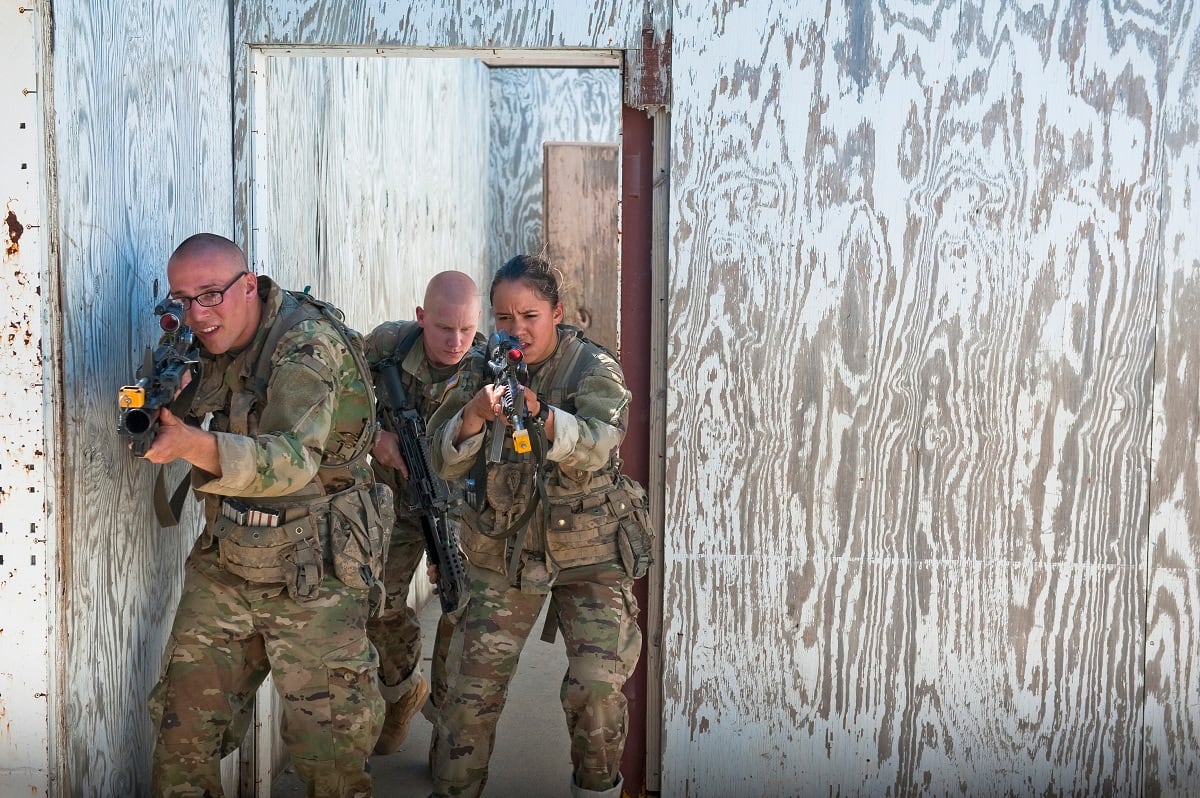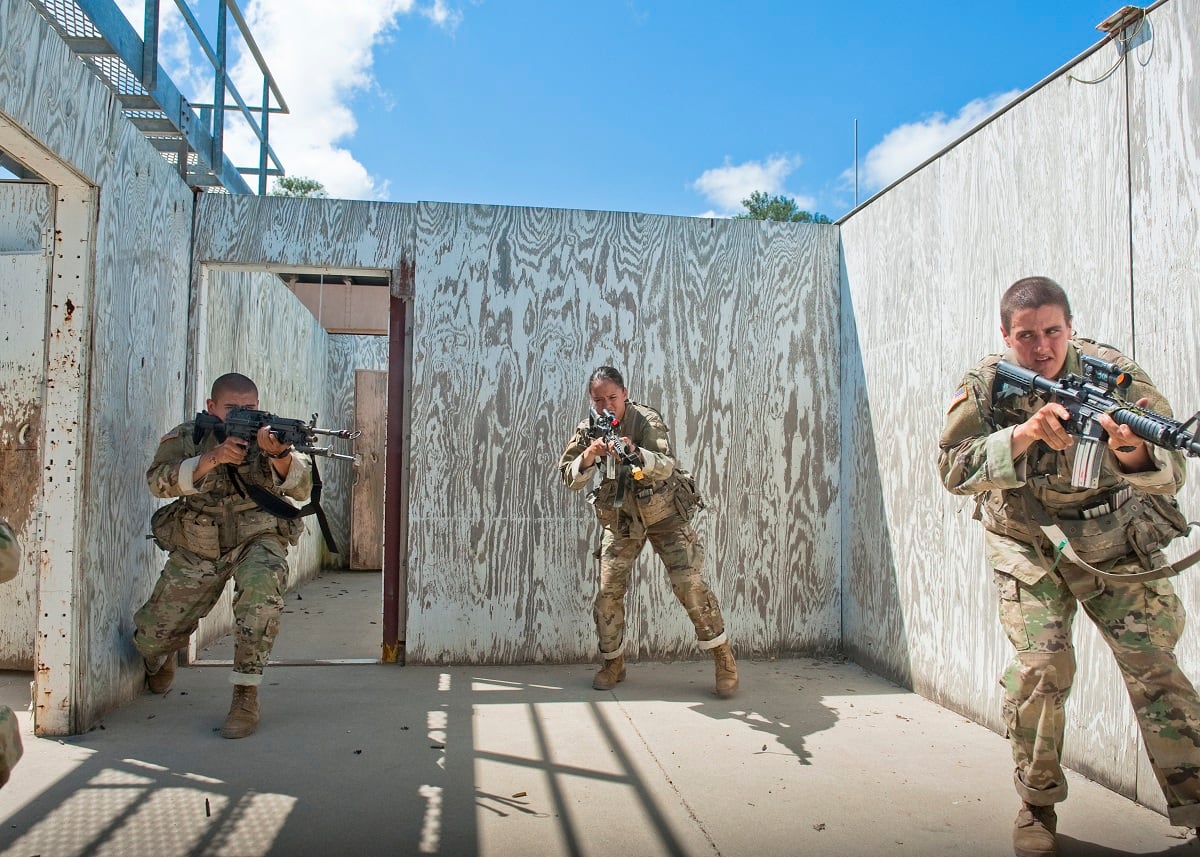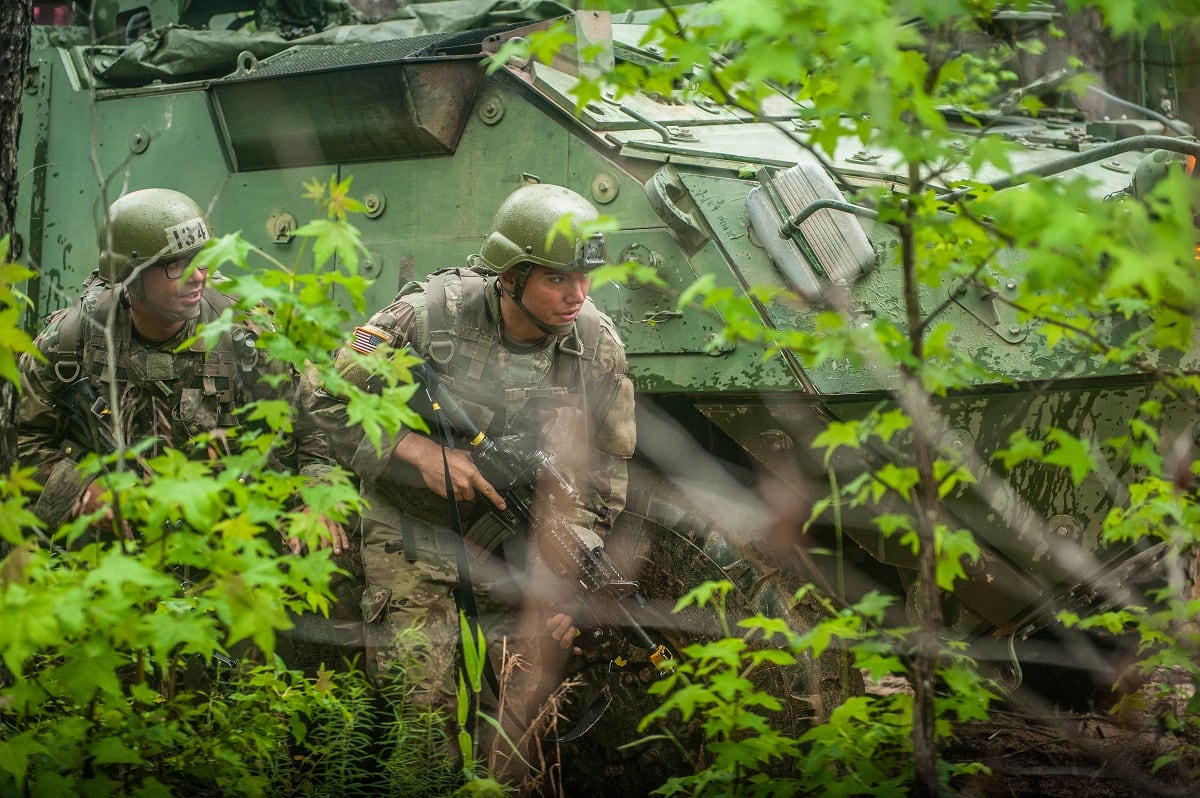A pilot program that has extended basic training and one-station unit training for infantry soldiers will spread to armor and engineer initial entry training next year, with the other combat MOSs to follow soon after.
Maj. Gen. Gary Brito, commander of the Maneuver Center of Excellence at Fort Benning, Georgia, told the audience at an Association of the U.S. Army event this week that those changes are coming and needed for soldiers to show up to their units combat deployable from “day one.”
The transformation of one-station unit training, the combined basic combat training and advanced individual training for soldiers in certain military occupational specialties, began earlier this year with an extension of basic training at Fort Jackson, South Carolina. The move was spurred by a 2017 study showing new soldiers arriving at their units undisciplined and out of shape.
RELATED

Beyond bearing and fitness, new soldiers also were lacking in basic combat skills. Brito pointed specifically to marksmanship and hand grenades.
That initiative has since been expanded to two companies of 400 infantry soldiers-in-training at Fort Benning, who started on July 27 and are expected to graduate Dec. 7. They are in their seventh week of 22 weeks of training. So far none have failed, quit or been injured.
Brito credited that to an increased focus on nutrition and exercise programs aimed at keeping students healthy through the extended training.
Lessons learned from those Fort Jackson and Fort Benning changes will flow into the next wave for armor soldiers at Fort Benning and engineers at Fort Leonard Wood, Missouri.

And that will extend to the rest of the combat arms force as well in the coming years.
“Twenty-two weeks for all,” Brito said.
Increasing training was recommended by Training and Doctrine Command officials back in 2016, but it was put on hold as an increase in new soldiers strained the ability of the existing force to simultaneously add training days.
Brito noted that this type of training has remained unchanged for most of the force for at least 25 years. For infantry, it’s been 41 years since a significant change.
For those at Fort Benning, it will also mean more drill sergeants, company commanders and adding three battalions to the brigade there, he said.
One complication is training Army National Guard soldiers. Thirty-six Guard soldiers volunteered for the current pilot program at Fort Benning.
While the active Army is working out the details with the Guard, future Guardsmen will likely split the training, doing 10 weeks in the first summer and finish 12 weeks the following summer to meet their OSUT obligations, Brito said.
Todd South has written about crime, courts, government and the military for multiple publications since 2004 and was named a 2014 Pulitzer finalist for a co-written project on witness intimidation. Todd is a Marine veteran of the Iraq War.




